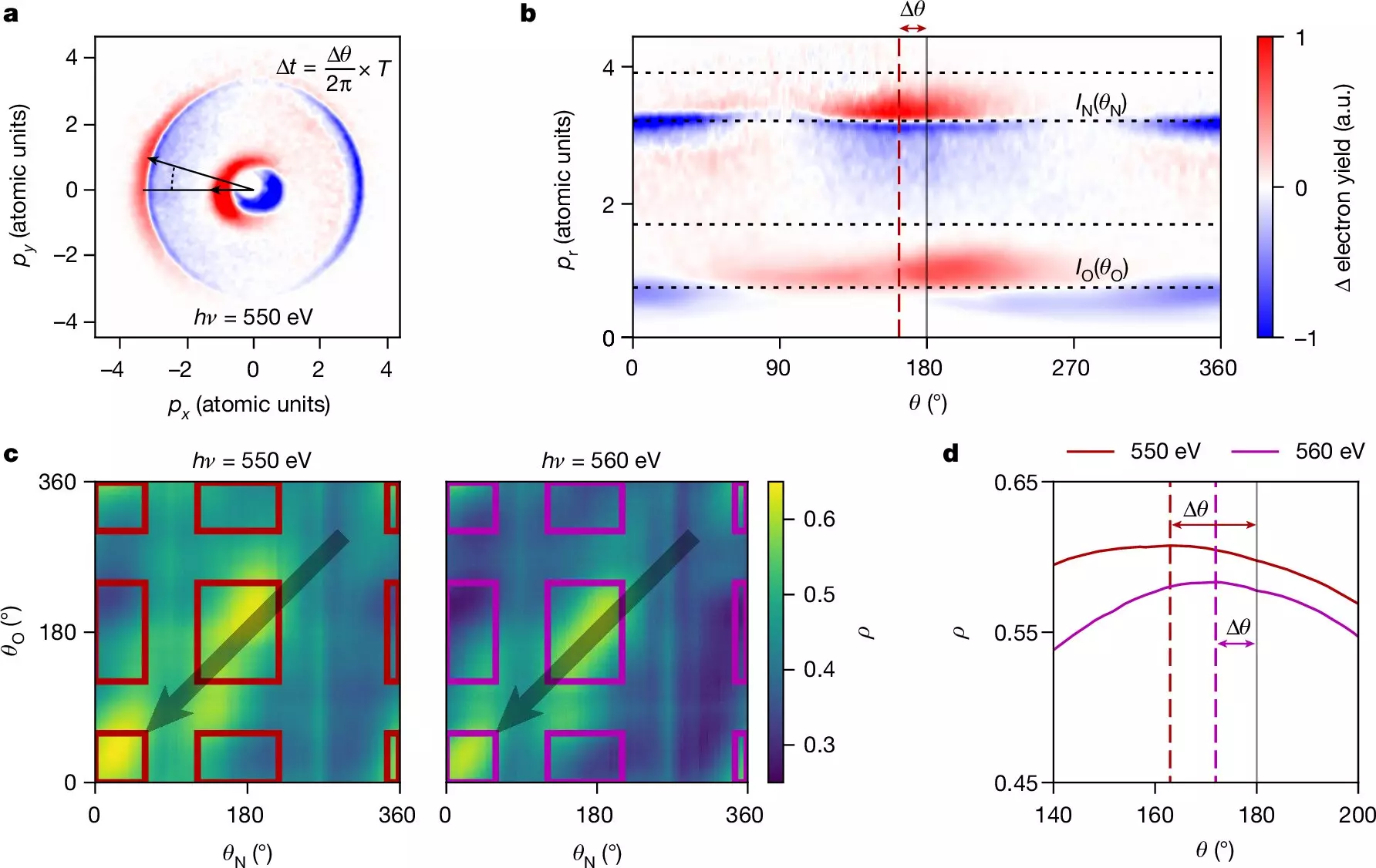The study conducted by a team of scientists from the Department of Energy’s SLAC National Accelerator Laboratory sheds light on the intricate details of the photoelectric effect, originally elucidated by Einstein more than a century ago. This groundbreaking research provides a new perspective on electron-electron interactions, which are vital for various technological applications such as semiconductors and solar cells. Published in Nature on August 21, the results of this study offer profound insights into the fundamental principles underlying this phenomenon.
The researchers utilized an attosecond X-ray pulse generated by SLAC’s Linac Coherent Light Source (LCLS) to ionize core-level electrons, leading to their ejection from the molecules under investigation. Subsequently, a distinct laser pulse was employed to determine the “photoemission delay” by observing the variations in the direction of the emitted electrons based on their emission times. This time delay, which can extend up to 700 attoseconds, surpassed previous estimations, thereby challenging existing theoretical frameworks and introducing novel perspectives on electron behavior.
The ability to measure and interpret these time delays offers significant implications for various scientific fields, particularly in applications such as protein crystallography and medical imaging where X-ray interactions with matter are critical. By analyzing the angular disparities in the trajectories of the ejected electrons, the scientists were able to ascertain the time delays with exceptional precision, thereby enhancing their comprehension of experimental outcomes. This study represents merely the initial phase of a series of planned experiments aimed at exploring the complexities of electron dynamics in diverse molecular systems, signifying the promising trajectory of this research domain.
The research team’s innovative approach has paved the way for a deeper understanding of electron interactions within molecular structures, thereby broadening the horizons of atto-science. As other research groups commence leveraging this novel technique to investigate more intricate molecules, fresh insights into electron behavior and molecular configurations are expected to surface, propelling the field towards uncharted territories of discovery. The adaptability of LCLS affords researchers the opportunity to delve into a wide spectrum of energies and molecular systems, making it an invaluable instrument for conducting such pioneering investigations.
The study conducted by the scientists at SLAC National Accelerator Laboratory represents a significant milestone in unraveling the mysteries surrounding the photoelectric effect and electron dynamics. By delving into the nuances of photoemission delays and electron interactions, this research not only challenges existing paradigms but also opens up new avenues for exploration within the realm of atto-science. As the scientific community continues to harness the power of cutting-edge technologies and innovative methodologies, the mysteries of the subatomic world are gradually being unveiled, paving the way for a new era of scientific discovery and technological advancement.


Leave a Reply